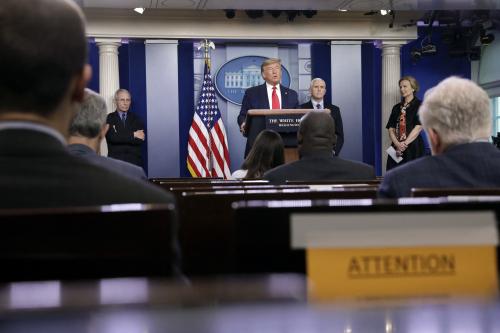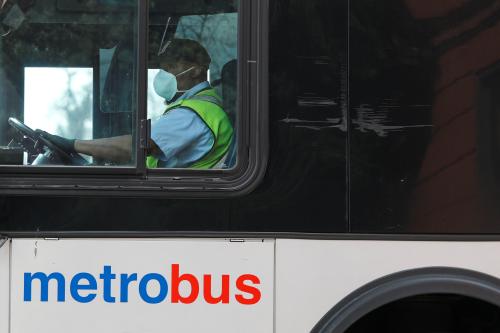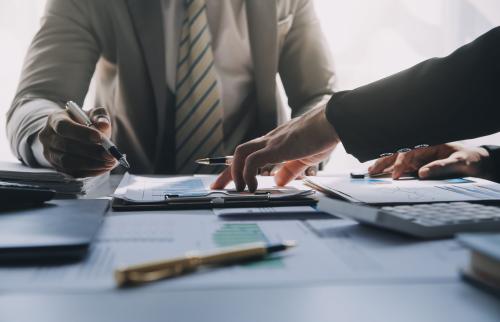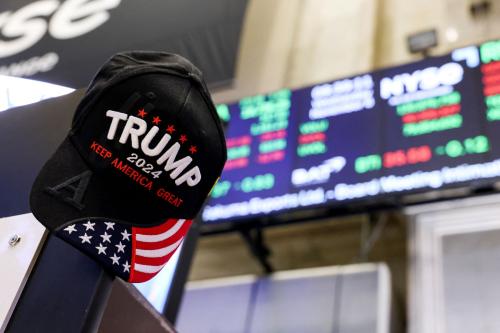April 1 is no joke for the millions of Americans who are economically suffering in this recession and waiting for their promised stimulus payment from the recently enacted CARES Act. The Treasury Secretary optimistically projects that payments could start in 3 weeks for select families. Yet, by my calculations, roughly 70 million American families are likely to have to wait at least another month or more for their money, that will eventually come in an old fashioned paper check and create its own set of delays. The need to eat and live does not follow the payment system’s business hours only. These families will often turn to high cost alternatives like bank overdrafts, payday lenders, and check cashers. Solutions to these problems abound, if only policy makers would prioritize them.
The majority of people impacted by this deal are living paycheck to paycheck but lack access to low cost small dollar credit. The Treasury Department’s initial solution is to provide payment directly to people’s bank accounts through the direct deposit authorization provided in their previous tax return. However, slightly more than four out of every ten tax filers in 2019 did not receive a direct deposit refund.
Roughly 70 million American families are likely to have to wait at least another month, or more, for their money.
This means there are around 63.8 millions taxpayers that the Treasury Department cannot send a direct deposit to because they didn’t use a direct deposit refund. Not all of those will be eligible to receive a benefit. The Urban-Brookings Tax Policy Center estimates that about 90 percent of tax filers will receive some benefit. Using the unrealistic assumption that none of the remaining 10 percent used direct deposit for a refund (or did not receive a refund at all), this figure drops to about 48 million taxpayers. They will have to wait extra weeks, maybe months, which given the economic tsunami of COVID will be devastating.
Many of those waiting on a paper check will be forced to choose between a series of expensive and unpalatable alternatives. There are more payday lenders than McDonalds in America for a reason: our financial system excels at providing those with money cheap sources of liquidity and is horrible at providing those working paycheck-to-paycheck with small dollar loans. Online payday lenders will fill this gap. People will get funds deposited immediately, by giving the payday lender a postdated digital check to get paid back once the stimulus funds have been deposited. Every payday loan borrower has a bank account. That is the only way the product works.
Even if the payday loan costs borrowers $120 (5 to 10% of the total stimulus) that loss may be necessary to put food on the table, avoid car repossession, or handle medical bills, but regularly overdrawing from bank accounts is more expensive. Four bank overdrafts typically cost $140, a routine part of life for many consumers. Roughly 8% of Americans are heavy bank overdraft users according to the Consumer Financial Protection Bureau (CFPB).
When the stimulus checks do come, Americans will rush to access the funds, exposing problems in our slow payment system. Banks are allowed to hold Treasury checks for one ‘business day,’ before crediting customers’ bank accounts. Deposit your check Saturday morning at your bank and it will not be available until Tuesday (or Wednesday if Monday is a holiday). This law, written in an era where paper checks were mailed, has not been updated, and the Federal Reserve has chosen not to use its legal authority to require quicker funds availability. To avoid further delay, many will rush to check cashers who, for a fee, provide instant access to funds.
At first glance Treasury’s direct deposit solution covers a lot of people. 92 million filers received direct deposit refunds in 2019—roughly 60% of total filers. But dig deeper and the problem grows. According to the National Consumer Law Center, 21 million of those filers were not using their bank account, but rather one set up specifically to provide expensive short term financing through something called a Refund Anticipation Check (RACs). Treasury’s plan won’t work for them.
RACs are offered by tax preparers who create a temporary bank account for a consumer in their name. They instruct the IRS to direct deposit the consumer’s refund into this new account. The tax preparer takes its service charge, RAC fees, and other costs from the account. The remaining funds are given to the consumer through a direct deposit into their regular account, onto a prepaid debit card, or through a paper check.
RACs are marketed as a way for consumers to avoid paying the cost of the tax preparation upfront, and emerged as a successor to the Refund Anticipation Loan (RAL) product. They’ve become an expensive way for tax preparers to make huge profits off middle- and low-income earners. Because of this, regulatory and public pressure previously shrunk the RAL market to under 2 million people, but RACs continue to spring up.
If the IRS focuses on this problem, they can detect which direct deposits are really RACs. If they do not, they could receive millions of bounce backs or worse yet, the funds deposited into a zombie like account where the consumer no longer has access. If the IRS does not understand this problem before hitting send, then their proposed solution helps 23 million fewer people.
Add the 48 million plus who do not use direct deposit to begin with, the 23 million potential RAC/RAL filers, an unknown number of people who have simply changed bank accounts since their 2018 tax return was filed, and account for a large level of uncertainty on all of these numbers and a first approximation is that 70 million taxpayers are left out of Treasury’s direct deposit scheme.
Perhaps some of these people owed taxes and sent a direct deposit payment to Treasury, which Treasury can use (the size of this population does not appear publicly available). Or the distribution of the top 10 percent who are not eligible differs such that this figure is off by a few million. Even if this number is cut in half, that would be 35 million Americans, approximately four-times larger than the number of unbanked Americans. This is a problem facing the banked as well as unbanked.
How is it that our government is unable to directly pay such a large share of the American people during a time of crisis without waiting over a month to send a paper check?
Despite being the largest economy on earth we lack both government run real-time payments and universal bank accounts, systems common among developed countries. For example, England implemented a real-time payment system in 2008.
Solutions to these problems are floating throughout Congress. Senators Van Hollen and Warren and Rep’s Presley and Garcia have proposed real-time payments legislation that would eliminate the delay for cashing those check and create a federal real-time payment system. Senators Brown and Booker’s legislation would suspend overdraft fees during the COVID emergency. A draft COVID response bill floated by Speaker Pelosi would have required the Federal Reserve to set up universal bank accounts, an idea first proposed by Morgan Ricks and Lev Menand.
Americans shouldn’t have to wait for Congress to act. Federal bank regulators have substantial authority to fix these problems. The Federal Reserve could require all checks under $5,000 to be immediately available to consumers, a power Congress delegated in the 1980s. The Fed has refused to use this authority because it would drive business away from the Fed’s ACH system and into the competing real-time Payments system run by The Clearing House. Bank regulators have issued guidance to banks to encourage low cost small dollar loans but not taken more forceful steps, such as requiring a stop to overdrafts during COVID in exchange for access to many of the temporary special deals the Federal Reserve is offering banks.
Ultimately, where there is a will, there is a way. It is unclear how much of a priority this is to Treasury, who refused comment when asked how much attention they were focusing on alternative ways to pay people such as through direct benefit cards like Direct Express, a prepaid card is used for many government benefits but not for tax refunds. The President appears more interested in putting his name on the check than getting it to Americans as quickly as possible. The response to COVID is exposing a lot of problems ignored for too long. Add our basic banking and payment systems to this growing list.






Commentary
Op-ed70 million people can’t afford to wait for their stimulus funds to come in a paper check
March 31, 2020